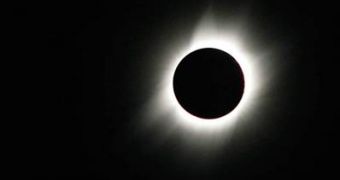On August 1, in certain areas of Canada, Greenland, Russia and China broad daylight will suddenly turn to total darkness for a brief moment as the Moon aligns with the Earth and the Sun, casting its shadow on the surface of the planet. It will be yet another unforgettable and unique spectacle, which unfortunately only a handful of people will be able to witness. Partial eclipses will be available nonetheless in the Northeastern regions of North America, almost the whole European continent as well as more than 70 percent of Asia.
Total solar eclipses are very rare on Earth, most people going through their whole lives without ever witnessing one as the Moon's orbit is tilted by five degrees in relation to the planet's orbital plane. But it could have been much worse, not having total solar eclipses at all. The fact is that the Moon is just the right size and in the right orbit to cover the Sun perfectly. Basically, the two objects have roughly the same apparent size on the sky.
However, as it orbits around Earth the Moon is losing energy, thus moving away from the planet at a rate of about 4 centimeters every year, meaning that, in a distant future, total solar eclipses will no longer be possible. Every year, at least two partial solar eclipses occur, while a total solar eclipse usually takes place every 18 months or so casting a circular dark shadow approximately 252 kilometers across. By contrast, the penumbra can be as much as 8,000 kilometers across.
According to calculations, about once every 375 years any place on the planet's surface is eventually the host of a total solar eclipse.
Regardless of whether you are watching a partial or a total solar eclipse, you must always remember never to look directly at the Sun without proper protection. Special sunglasses for such events can be found with relative ease in astronomy stores and on the Internet, although a number 14 welder's glass would also work just fine.
Ordinary sunglasses are definitely not an option and their use can result in permanent eye damage, while telescopes and binoculars will need to be fitted with special filters.
If neither of these are available, then indirect viewing methods should be considered.

 14 DAY TRIAL //
14 DAY TRIAL //